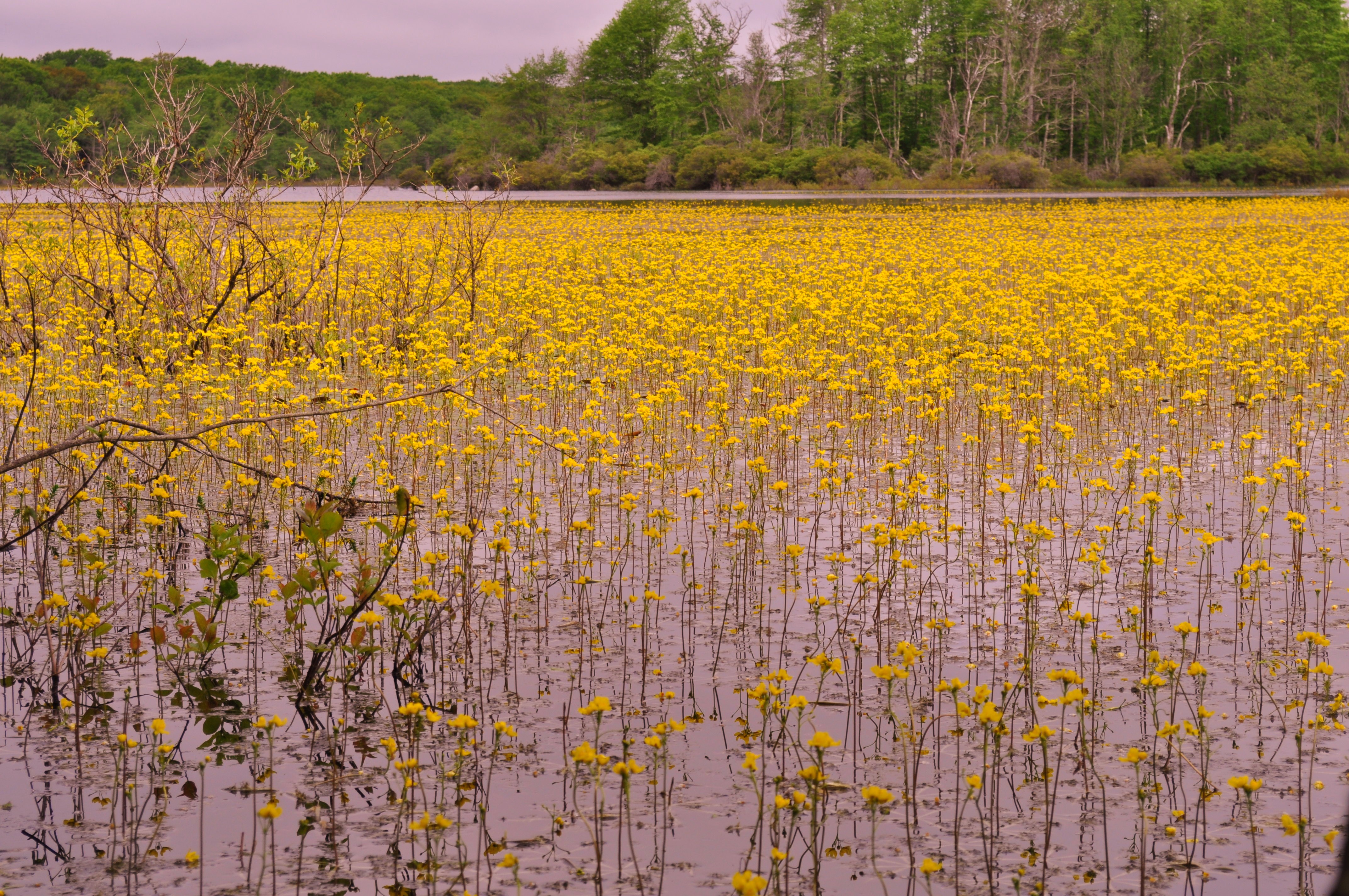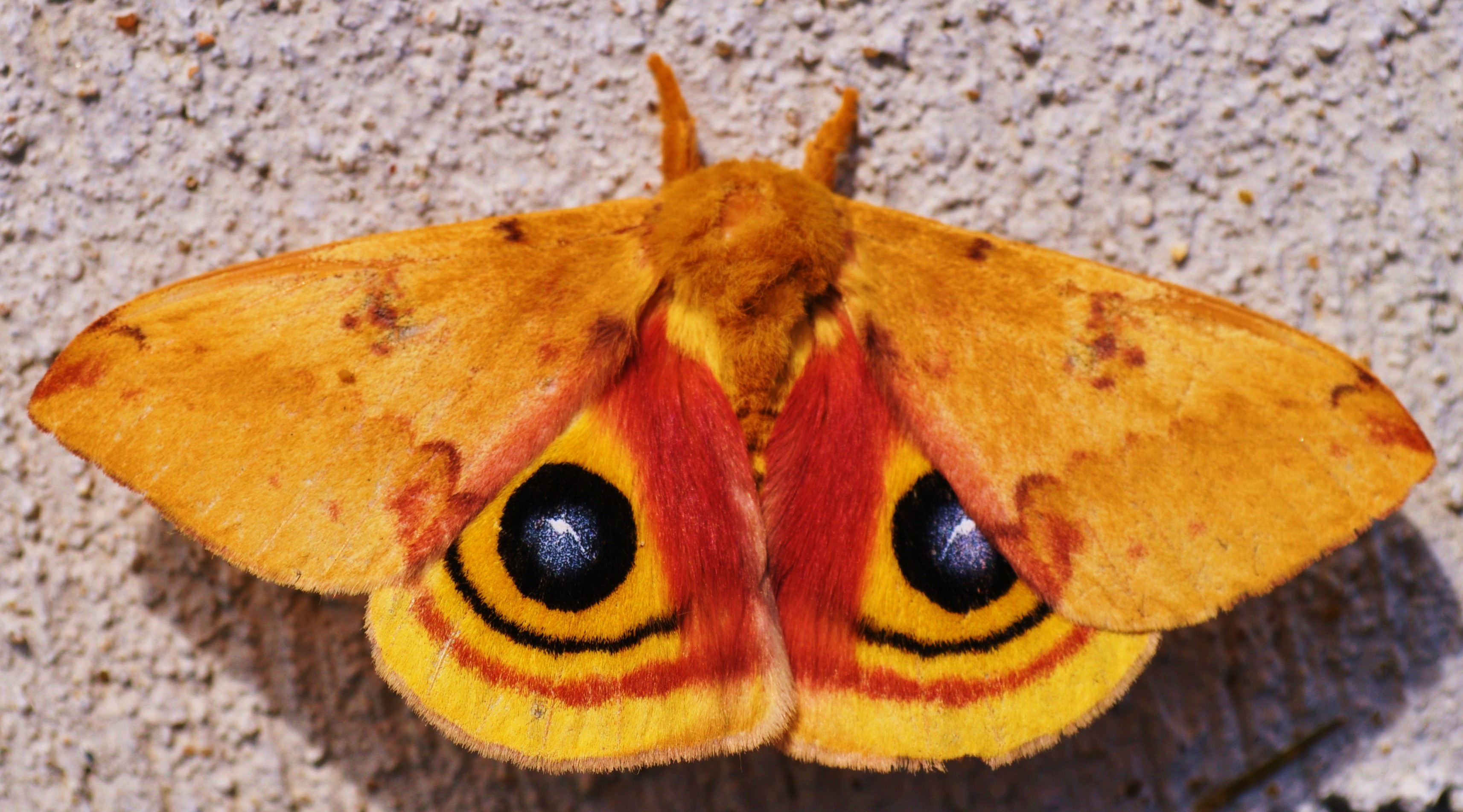Newsletters
July 2012 - Rachel Carson, CPA, Bladderwort, Io Moth
WELCOME TO GREEN FUTURES !
JULY, 2012
“A very Faustian choice is upon us: whether to accept our corrosive and risky behavior as the unavoidable price of population and economic growth, or to take stock of ourselves and search for a new environmental ethic.”
-E. O. Wilson
“The human race is challenged more than ever before to demonstrate our mastery, not over nature but of ourselves."
- Rachel Carson
50th ANNIVERSARY – The start of the modern environmental movement

Rachel Carson
Photo credit: U.S. Fish and Wildlife Service
It’s the fiftieth anniversary of Rachel Carson’s Silent Spring. Has anything changed? Have we learned to “master” ourselves?
Rachel Carson was born 105 years ago on her family’s farm in Pennsylvania. A shy, quiet child she enjoyed the natural world that surrounded her and began writing stories, at an early age, about animals and nature. She had her first article published at age 11.
Forty-four years later, at age 55, she became the mother of the modern environmental movement …and the center of controversy …when her book Silent Spring blew the whistle on the harmful effects of the post-World War II chemical industry which had public opinion on its side and was riding high on the amazing success of dichlorodiphenyltrichloroethane (DDT), 2,4-D (later “Agent Orange”) and other newly developed organochlorine pesticides that were originally used for delousing the war ravaged survivors of the world war, slowing the spread of insect borne diseases and increasing agricultural production.
It is hard for us to imagine today, but before Rachel Carson’s Silent Spring few questioned the safety of synthetic pesticides. They killed “pests” …that’s all people cared about. “Better living through chemistry” was the mantra and horrendous pollution was simply accepted by the public as necessary for industrial and scientific progress.
The chemical industry …same as “Big Tobacco” …was intentionally misleading the public on the long-term environmental and human health effects of the synthetic pesticides they were dumping on the planet. They and their lobbyists, political lackeys and press toadies viciously attacked Carson and anyone or any source that dared give Silent Spring a favorable review. She was even labeled a “Communist” by some in government seeking to discredit and silence her.
Although Carson, to this day, is still attacked by some for advocating control of synthetic pesticides, she never called for a total ban. Her concern was with their ever increasing widespread use and resultant harmful effects all being pushed by financial inducements from their manufacturers.
Carson also knew that when continuously used, pesticides become useless in eliminating the targeted pest species. Very soon, the insects targeted for destruction adapt and succeeding generations become resistant or even completely immune to the pesticide. Chemical companies respond by compounding ever more lethal concoctions that soon enter the food chain and impact all life on the planet.
Silent Spring is one of the greatest environmental books ever written and it fortuitously appeared when most needed and is still needed today.
Just this past month Massachusetts pesticide promoters and “health officials” quickly responded to public fears over mosquito transmitted diseases, fanned by county mosquito control scare tactics eagerly spread by local news media. The Massachusetts Department of Public Health response was to okay an easing of restrictions on aerial spraying of endocrine disrupting synthetic pyrethroids over southeastern Massachusetts should a disease carrying mosquito be found, despite the fact the same health department warned that, “aerial spraying will not eliminate the risk of eastern equine encephalitis.”
So, why do it? Why shower southeastern Massachusetts with a mix of sumithrin (Anvil) and piperonyl butoxide?
There has never been a comprehensive study done that proves spraying, here in Massachusetts, is effective in preventing mosquito transmitted diseases or in mosquito control. Killing mosquitoes one day has little effect because mosquitoes reproduce rapidly and new recruits quickly fill the ranks of those recently eliminated.
In our neck of the woods there are two diseases that can be spread by mosquitoes, West Nile virus, an alien virus that has only been around here for the past ten years, and native eastern equine encephalitis (EEE). Both are extremely rare diseases.
West Nile virus symptoms are flu-like and in most cases mild. Unless one is elderly, with a compromised immune system, recovery from the virus is usually rapid and complete.
EEE is the more serious virus. In Massachusetts fewer than 100 cases of eastern equine encephalitis have been confirmed in humans over the past 75 years. Fewer than half have been fatal.
In 2010 the population of southeastern Massachusetts (south of Boston, east of Rhode Island) was 1,959,114.
In 2010 one person contracted EEE. In 2009 there were no cases, yet there were over 4,000 cases of Lyme disease reported that year in Massachusetts.
Lyme disease is rarely fatal, but can be severe, chronic and debilitating. Tick transmitted Rocky Mountain spotted fever can prove fatal as can other tick-borne diseases such as anaplasmosis (ehrlichiosis), tularemia (rabbit fever), babesiosis and bartonelosis. Like the mosquito-borne viruses these tick transmitted diseases are rare.
How come, except for Lyme, we rarely, if ever, read or hear sensationalized news reports on these “imminent” threats? How come we don’t have county “tick control” boards filled with bureaucrats wasting taxpayer money on unproven methods of tick control? Where’s the aerial spraying of endocrine disruptors and other probable carcinogens to combat these threats posed by tick pests?
Look, life is filled with hazards. There are thousands of ways to die and it is highly unlikely you will meet your end because a tick or mosquito bit you. It is much more likely your end will come ushered in by the chemicals we douse on ourselves and our environment.
It takes personal responsibility and some effort to avoid mosquitoes, ticks, stinging insects, poison ivy and other nuisances that exist in our natural world. It can be done without poisoning ourselves and our environment.
There are many mosquito control strategies individuals and communities can employ, today, that are environmentally friendly. There are natural bacterial larvacides that only target developing mosquitoes and effective repellants to keep adult mosquitoes away. Unfortunately we humans are always looking for a quick and easy fix. We sure are loath to learn from our past mistakes.
What are the long-term effects on us and our environment from sumithrin and piperonyl butoxide exposure? Time will tell.
For more info. on synthetic pyrethroids and endocrine disruptors check these out. We know that Rachel Carson would.http://www.beyondpesticides.org/infoservices/pesticidefactsheets/toxic/pyrethroid.htm,
http://www.nospray.org/index.shtml
CPA (COMMUNITY PRESERVATION ACT) - Preserve What's Best About Fall River
On November 6th, 2012, the voters of Fall River will be asked to approve a referendum to adopt the Community Preservation Act. The CPA will provide new municipal funds to improve the city’s parks, historic architecture, recreational amenities, historic landscapes and the city’s neighborhoods.
The CPA in Fall River would raise approximately $1 million each year. These funds could be used to match $1 million to $10 million in additional state and federal grants, depending on the grant program.
CPA funds in Fall River would be raised by a 1.5% surcharge on all residential and commercial real estate tax bills (not the assessed value). The average Fall River household (with a house assessed at $215,000) would pay $19 a year to the CPA fund ($4.75 on each quarterly tax bill).
Every community that adopts the CPA must, by state law, create a Community Preservation Committee (CPC). The Community Preservation Committee has the responsibility to work with the community in recommending projects to be funded each year with CPA funds. Each year, the Fall River City Council will make the final decision on the use of the CPA funds, based on the recommendations of the CPC.
Low-income households would be exempt from the CPA. In addition, the first $100,000 in value of a residential property would be exempt.
The CPA would also stimulate the local economy and create jobs by bringing to Fall River between $1 to $10 million in construction spending that would otherwise not happen in the city. This funding would also have a “multiplier effect” by creating other jobs in other economic sectors. In addition, funding improvements to parks and historic architecture would make the city more attractive for tourism and to businesses that may want to move into the city. The CPA would be an economic plus for the city.
The experience of communities that have adopted the CPA has been very positive. The 148 communities that have the CPA have found that it is a game-changer. Instead of lamenting what they can’t do each year because of a lack of funds, they now accomplish projects that they couldn’t before they approved the CPA. The CPA makes things happen!
Green Futures has endorsed the CPA because of our longstanding interest in the preservation of open space and parks in Fall River and because of our general interest in improving the quality of life in the city. Our constant frustration is that the city of Fall River never budgets funds for amenities because it never has enough resources. The CPA would help to address that lack of funding. The Community Preservation Act could indeed have a very positive impact on our community. We recommend Fall River residents support the CPA on November 6th.
ALERT – Carnivorous alien invades the Southeastern Massachusetts Bioreserve (SMB)!
BIORESERVE FLORA OF THE MONTH – Inflated Bladderwort (Utricularia inflata)
Wow! …this plant eats meat!
In early June, acres of beautiful yellow blossoms caught our eye as we were walking along the east end of Wilson Road between the North Watuppa and Pond Swamp. How come we never noticed these flowers, rising above the surface of the water, in previous years?
Probably because the species is new to our area? Maybe because the majority of the plant is out of sight, a large free-floating mass of green stems and small pea-shaped bladders just below the surface of the water? The above the water blooms are present for only a few days each year.
A little research showed that the flowers belonged to a southern aquatic plant that has become “invasive” outside its original home range along the Atlantic coastal plain from Virginia to Florida. How did it end up here in southeastern Massachusetts? Maybe introduced by an unthinking aquarium owner dumping no longer wanted aquarium species into the nearest water body or possibly flown in by water birds carrying vegetative propagules in their plumage from one water body to another. Is “climate change” also a factor in its move north?
We determined our new SMB addition is the inflated bladderwort, a carnivorous plant that eats small aquatic insects and crustaceans.
Like our less conspicuous native bladderworts and other SMB carnivorous plant species, bladderworts live in nutrient poor water and wetland habitats, an environment lacking the nitrogen and phosphorus plants need to thrive.
Carnivorous plants obtain the nutrients they need by digesting the bodies of the prey they catch or entrap. This unique ability to obtain the essential nutrients they need for survival gives these species a competitive advantage over non-carnivorous plants and allows them to grow in areas they would not be able to grow in otherwise.
The inflated bladderwort captures its prey in small bladder-traps that are about one-eighth of an inch long. The traps are arranged along the length of the underwater green bladderwort stems. When prey bumps into or touches bladder trigger-hairs, the bladder springs open and the prey is sucked in with the rushing water.
Watch a bladderwort trap capture a small crustacean, here: http://www.youtube.com/watch?v=vqVL92uq1OE
Once the prey is trapped, the bladderwort secretes acids and enzymes that kill and digest the captured critter.
When the inflated bladderwort is ready to flower, a stem grows above the surface of the water bearing five to fifteen yellow flowers.
Why don’t the flower stems fall over? The flowers remain upright and stay above the surface of the water because of a unique wheel-like vegetative float that rises to the surface and surrounds the flower stem with radiating spokes. These unique plant structures rise and fall with the water level and allow the flower stems to remain in an upright position allowing pollination to occur despite wind and waves.
Inflated bladderwort reproduces via seed, stem and shoot fragments.
The inflated bladderwort is both odd and unique …and probably coming to a waterway near you …if not already there.
Inflated Bladderwort flowering in Pond Swamp, SMB
Note wheel-like vegetative float that holds the flower stalk above the water’s surface.
BIORESERVE FAUNA OF THE MONTH – Io Moth (Automeris io)
The Io Moth is named after a nymph in Greek mythology that Zeus lusted after and fooled around with. In Greek mythology nymphs are beautiful maidens personifying natural objects.
To hide Io from his wife, Hera, Zeus turned Io into a white cow. The always suspicious Hera had her servant, a 100 eyed giant named Argus, tie Io to an olive tree and keep perpetual watch over her to prevent further hanky-panky between her and Zeus. Zeus was not happy so he compelled his son, Hermes, to kill Argus by having him poke out all 100 eyes and then finish off poor Argus by bashing him with a rock.
Io, now free, was once again available to Zeus. Hera wasted little time in ending the affair, once and for all, by sending a gadfly to constantly pester Io causing her to forever wander the earth.
Our Io moth not only flits about on warm summer nights as a gadfly would, but also bears on its hind wings two eyes in remembrance of Argus.
The Io moth is in the Saturniidae family. The Saturniidae, the true silk moths, include some of our most beautiful moths. In southeastern New England this family is also represented by the Lunar Moth, Cecropia Moth, Promethia Moth, Polyphemus Moth, Rosy Maple Moth, Barrens Buckmoth, New England Buckmoth, Orange-tipped Oak Moth, Imperial Moth, Pine-devil Moth, Pink-striped Oak Moth, Spiny Oak Moth.
As caterpillars the Saturniidae are voracious eaters. As adult moths they do not have functioning mouth parts so do not feed. They live off the fat stored from when they were caterpillars and use their time and energy, as adults, to seek out a mate and lay their eggs.
The Io range extends from the Rockies east to the Atlantic coast and from extreme southern Canada to the Gulf Coast and Florida.
Io moths have a wingspan of two-and-a-half to almost four inches. Males have yellow forewings, body and legs. Males also have large, feathery antennae which they use to detect and follow the pheromone trail left by sexually receptive females.
The female Io moths have red-brown forewings, body and legs. Both sexes have large blue and white “eyespots” on their hindwings to startle and scare away predators. They lift their forewings to expose these “eyespots” when threatened.
Shortly after mating, the moths lay their eggs on wild cherry, wild rose, willow, hackberry or sassafras.
Upon hatching the young caterpillars feed voraciously on the newest foliage of their host plant. The young feed and rest as a group and usually follow each other in single file when moving about.
The adult caterpillars are an overall apple-green color with a horizontal red stripe above a horizontal white stripe. The caterpillars are covered with sharp spines that contain venom. Touch the spines and you risk getting stung.
When fully grown, the caterpillars spin a silken cocoon between two leaves. The leaves soon fall to the ground and the cocoon overwinters among the dead leaves and forest debris.
The following June, adult Io moths emerge from their cocoons and the Io moth life cycle begins again.
Male Io moth in the Southeastern Massachusetts Bioreserve
SUMMERTIME BLUES?
Wonderin’ what you’re gonna do?
Wonder no more! Click on our Calendar for mid-summer meetings, activities and other things to do.
<Back



Social